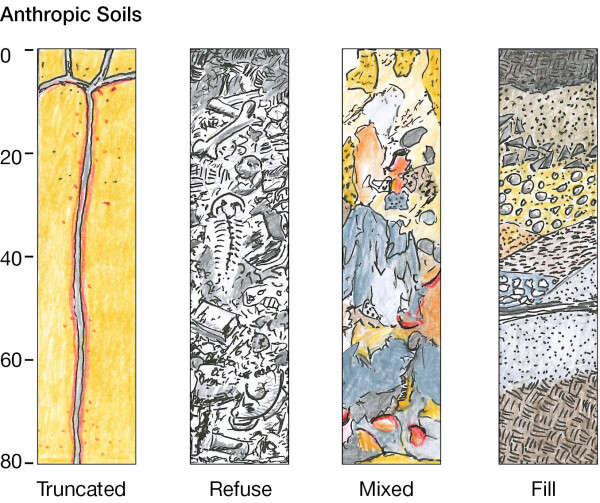They include soil materials formed by stripping of the natural soil, deposition of refuse or spoil, or by severe soil mixing. The original character of the soil and the normal soil properties are lost.
New Zealands largest single areas of Anthropic Soils were formed by gold dredging in Central Otago and Westland.
Anthropic Soils are most extensive in urban areas and areas that have been mined. They cover < 1% of New Zealand.
The relationships between Anthropic soils and landforms do not have the orderliness of natural soils. Soil properties depend on both the nature of the manufactured or natural materials, and the nature of the soil manipulation. Land surfaces are artificial and drainage has often been changed significantly from the original state.
Soil orders are divided into soil groups based on variation in factors such as drainage status, parent material, chemical and physical properties:
